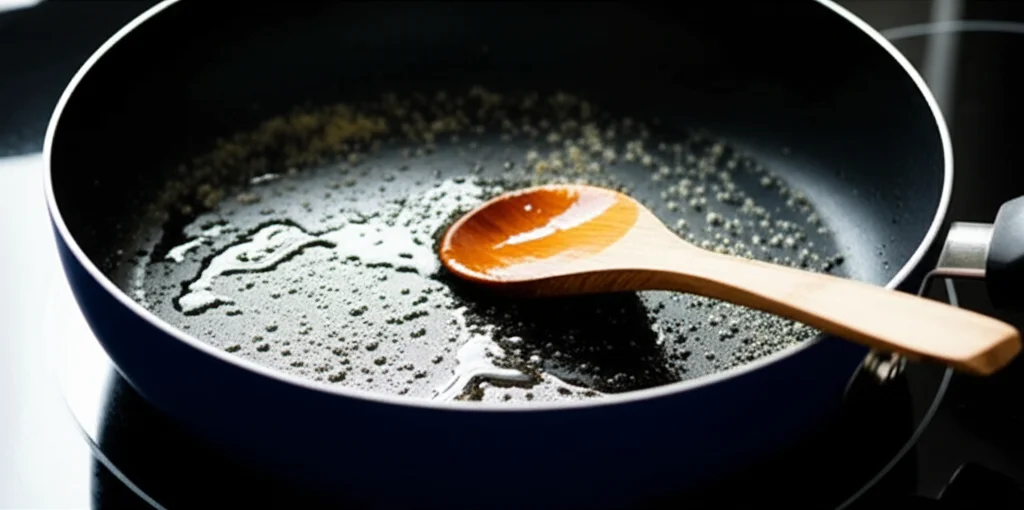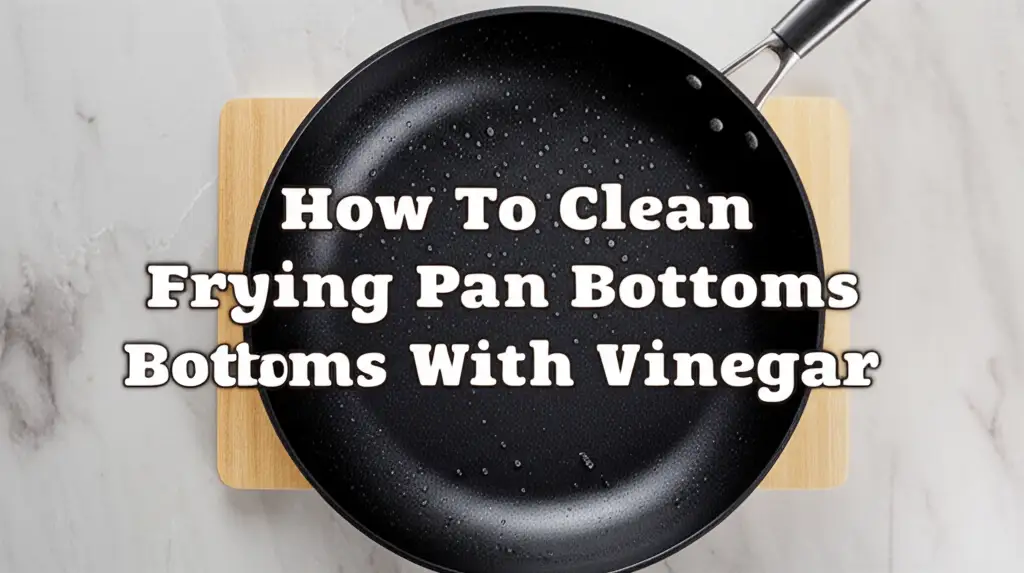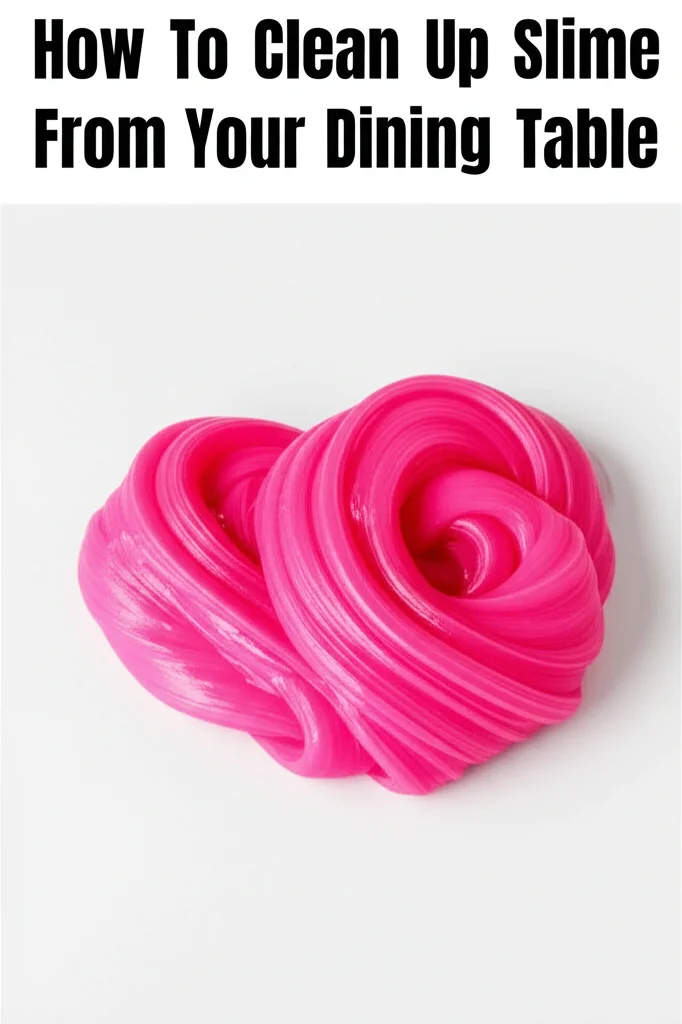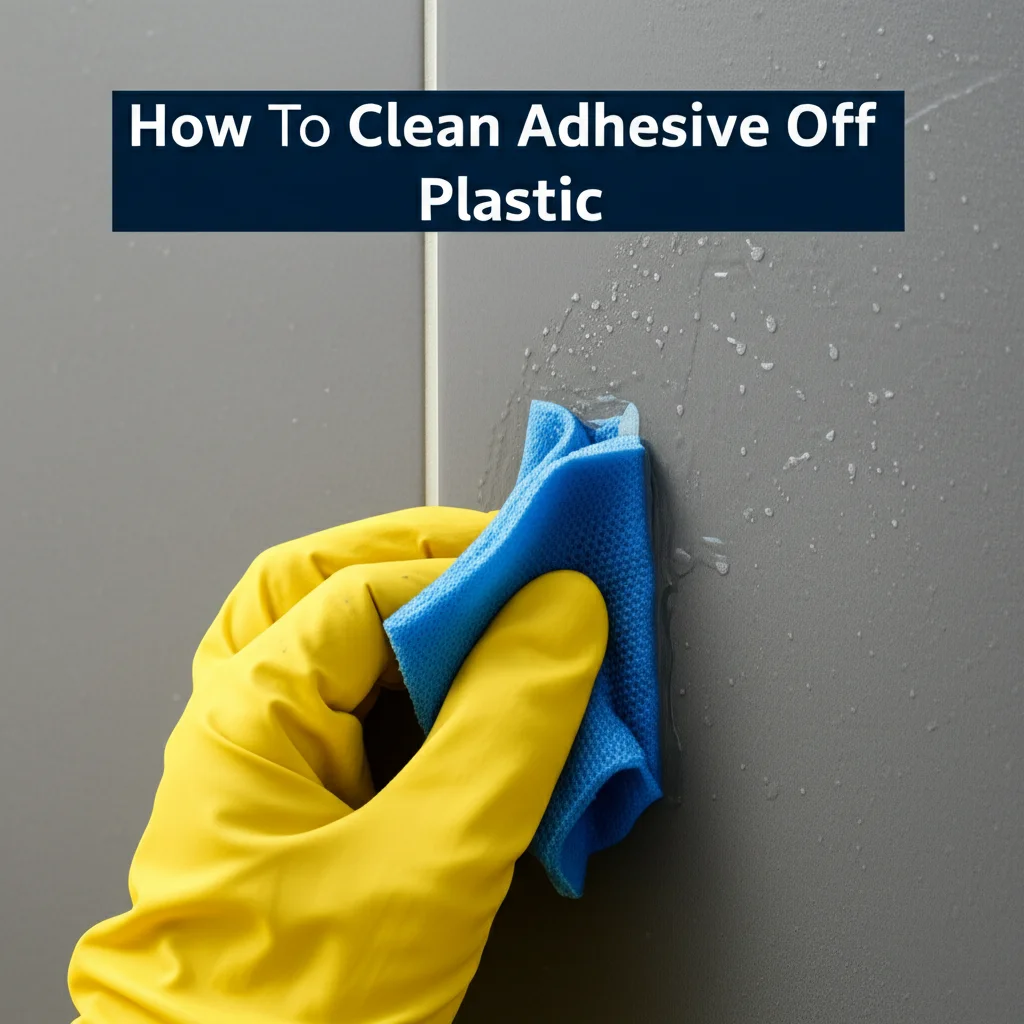· Todd Martin · Home Cleaning · 12 min read
How To Clean Burnt Sugar From A Pan

How To Clean Burnt Sugar From A Pan Effectively
Burning sugar in a pan is a common kitchen mishap. One moment you are making caramel or a glaze, the next you have a black, hardened mess stuck to your beautiful cookware. It feels discouraging when this happens. I know the frustration of seeing a pan ruined by stubborn, burnt-on sugar.
This guide helps you restore your pans. We will explore various methods to clean burnt sugar from a pan. We will cover simple soaking techniques to powerful natural cleaners. You will learn effective strategies for different pan materials. Get ready to make your pans spotless again.
Takeaway
- Start with gentle methods like hot water soaking to loosen burnt sugar.
- Use baking soda and vinegar for tougher, stuck-on sugar.
- Boiling water with a cleaning agent can dissolve stubborn residues.
- Adjust your cleaning approach based on your pan’s material.
- Prevent future burns by monitoring heat and stirring sugar constantly.
To clean burnt sugar from a pan, first soak the pan in hot water with dish soap to loosen the residue. For stubborn sugar, boil water in the pan with baking soda and a few drops of dish soap. Let it cool, then gently scrape or scrub the softened sugar away.
Understanding Burnt Sugar and Your Pan
Burnt sugar creates a very tough mess. Sugar changes chemically when heated too much. It caramelizes first, then burns and hardens. This hard substance strongly sticks to your pan’s surface.
Different pan materials react differently to this adhesion. Understanding this helps you choose the right cleaning method. You want to remove the sugar without damaging the pan.
Why Sugar Burns
Sugar burns easily due to its high sugar content. It has a low burning point compared to other foods. When you heat sugar, its molecules break down. This process creates new compounds.
Too much heat makes it turn dark brown, then black. This black substance is carbon, which is very hard. This carbon adheres tightly to the pan’s surface. It can be very challenging to remove.
Identifying Pan Material
Knowing your pan’s material is important. Different materials require different cleaning approaches. For instance, stainless steel can handle more abrasive cleaning. Non-stick coatings need gentler care.
Cast iron pans have specific cleaning needs too. Abrasive cleaners can strip their seasoning. Always identify your pan before you start cleaning. This protects your cookware from damage.
Essential Tools and Ingredients for Cleaning Burnt Sugar
You do not need special tools to clean burnt sugar from a pan. Common household items often work best. These items are usually already in your kitchen. They are effective and safe for most pans.
Having the right tools makes the job easier. You can tackle even the most stubborn burnt sugar. Prepare these items before you begin the cleaning process. This ensures a smooth and efficient cleaning session.
Everyday Household Cleaners
Many household items serve as excellent cleaners. Dish soap is a simple but effective degreaser. It helps break down the sticky bonds of sugar. Baking soda is a mild abrasive and deodorizer.
Vinegar is acidic, which helps dissolve hardened sugar. Water is essential for soaking and boiling. These common items form the backbone of your cleaning arsenal. They are safe and readily available. You can also learn how to clean with vinegar and baking soda for other household tasks.
Gentle Scrubbing Tools
Avoid harsh metal scourers, especially on non-stick pans. A wooden spoon or a silicone spatula works well for scraping. These tools are firm but gentle enough. They lift the burnt sugar without scratching.
For tougher spots, a non-scratch sponge or a plastic scrubber is good. Old toothbrushes can reach small crevices. Always start with the gentlest tool. Increase pressure or use a slightly firmer tool only if needed. Protecting your pan’s surface is important.
The Soaking Method: Your First Line of Defense
Soaking is often the easiest and first step to clean burnt sugar from a pan. This method softens the hardened sugar. It makes it easier to remove later. Patience is key with soaking.
Do not rush the process. A longer soak can save you from extensive scrubbing. This method is gentle on all pan types. It is particularly good for delicate non-stick surfaces.
Hot Water Soaking
Fill the pan with hot water. Add a generous squirt of dish soap. Let the pan sit for several hours or overnight. The hot water helps loosen the burnt sugar. The soap works to break down sticky residues.
You may see flakes of sugar detach as it soaks. After soaking, gently try to scrape the softened sugar. Use a wooden or silicone utensil. This method is effective for moderately burnt sugar.
Dish Soap Power
Dish soap contains degreasing agents. These agents help lift and dissolve sticky substances. Using a strong dish soap can enhance the soaking process. Ensure the soap mixes well with the hot water.
For extra power, bring the water and soap to a gentle simmer for a few minutes. Then, turn off the heat and let it cool. This helps penetrate the burnt sugar layer. The combination of heat and soap is very effective.
Baking Soda and Vinegar: A Powerful Duo for Burnt Sugar
Baking soda and vinegar are natural cleaning powerhouses. When combined, they create a fizzing reaction. This reaction helps lift and dissolve stubborn burnt sugar. It is a safer alternative to harsh chemical cleaners. This duo is excellent for many tough cleaning jobs, including how to clean baked-on grease from pans.
This method is particularly effective for thick layers of burnt sugar. It provides both abrasive and acidic actions. Always use caution when combining them. The fizzing can be strong.
Creating a Cleaning Paste
For concentrated burnt sugar, make a paste. Mix baking soda with a small amount of water. Apply this thick paste directly onto the burnt sugar. Let it sit for at least 30 minutes.
For extra power, spray a little vinegar on top of the paste. The fizzing action will begin. This helps to loosen the burnt sugar. After the reaction subsides, scrub gently.
Boiling with Baking Soda and Vinegar
This method is for very stubborn burnt sugar. Fill the pan with about an inch of water. Add a few tablespoons of baking soda to the water. Bring the mixture to a boil on the stove.
Once boiling, reduce the heat to a simmer. Let it simmer for 10-15 minutes. The boiling action loosens the sugar. Carefully remove the pan from heat. Add about half a cup of white vinegar to the hot water. The mixture will fizz vigorously. Let it sit for 30 minutes to an hour. The combination helps to clean burnt oil from stainless steel pans as well. Then, pour out the liquid and gently scrape away the softened sugar. This combination works wonders on many tough messes.
Tackle Tough Burnt Sugar Stains with Boiling Water
Sometimes, burnt sugar creates a rock-hard layer. Simple soaking may not be enough. Boiling water is a very effective solution for such tough stains. The intense heat softens the burnt sugar from the inside.
This method works by rehydrating and loosening the hardened sugar. It makes scraping much easier. Always use caution when working with hot water. This technique can be applied to various pan types, but especially stainless steel.
Boiling for Loosening Residue
Fill the pan with just enough water to cover the burnt sugar. Place the pan on the stove over medium heat. Bring the water to a rolling boil. Let it boil for 5-10 minutes.
You should see the burnt sugar beginning to lift and separate. Some pieces might even float away. Turn off the heat. Let the water cool slightly before attempting to scrape. This prevents burns.
Adding Salt for Extra Abrasion
For extra abrasive power, add salt to the boiling water. Coarse salt works best. Add a few tablespoons of salt to the water before boiling. The salt granules provide a gentle scrubbing action.
As you boil and then cool the water, the salt helps dislodge the sugar. This method combines the softening power of heat with mild abrasion. After boiling, carefully pour out the water and salt. Then, gently scrub the remaining sugar. This method is effective for various types of pan residues, much like how one would clean burnt grease from the bottom of frying pans.
Specific Pan Types: Tailoring Your Cleaning Approach
Not all pans are created equal. Different materials require specific care. What works wonders on stainless steel could damage a non-stick coating. Knowing your pan material is crucial for effective and safe cleaning.
Applying the wrong method can ruin your beloved cookware. This section guides you through the best practices for common pan types. Always prioritize the longevity of your pan.
Stainless Steel Pans
Stainless steel is durable and resilient. It can withstand more aggressive cleaning methods. You can use baking soda and vinegar with confidence. Steel wool or a metal scourer can be used as a last resort.
However, start with gentler methods first. Boiling water with baking soda often works well. If residue remains, a paste of baking soda and a few drops of water can be scrubbed on. For how to specifically clean stainless steel pans with baking soda, you can find more detailed instructions. Always rinse thoroughly.
Non-Stick Pans
Non-stick coatings are delicate. Harsh abrasives will damage the surface. Stick to gentle cleaning methods. Start with hot water and dish soap soaking. Allow ample time for the sugar to soften.
If soaking is not enough, gently boil water in the pan. Do not use baking soda or vinegar with boiling for non-stick. They can degrade the coating over time. Use a wooden or silicone spatula to scrape. Avoid metal utensils at all costs.
Cast Iron Skillets
Cast iron requires specific care to maintain its seasoning. Avoid harsh soaps or strong acids like vinegar directly on burnt sugar. These can strip the seasoning. Start by boiling water in the skillet.
For tougher spots, use coarse salt as an abrasive with hot water. Scrub gently with a non-abrasive brush. After cleaning, always re-season your cast iron pan. This protects it from rust and maintains its non-stick properties. You can also explore methods for how to clean baked-on grease from pans for cast iron, as many principles overlap.
Prevention: Avoid Burnt Sugar in the Future
Cleaning burnt sugar is a chore. The best solution is to prevent it from happening. A few simple adjustments in your cooking habits can save you time and effort. Prevention is always easier than cure.
Learning proper techniques for cooking with sugar is key. This helps maintain the quality of your dishes. It also protects your valuable cookware. Let’s explore how to avoid future burnt sugar disasters.
Temperature Control is Key
Sugar burns quickly when exposed to high, uncontrolled heat. Always use medium or low heat when cooking with sugar. This allows for more gradual melting and caramelization. It gives you more time to react.
Monitor the temperature closely. Use a thermometer for precise control if making delicate sugar work. A consistent, lower temperature prevents hot spots. Hot spots are where sugar tends to burn first.
Constant Stirring and Attention
Stirring sugar constantly distributes the heat evenly. It prevents sugar from settling and burning at the bottom. This is especially important when making caramel or candy. Use a wooden spoon or heat-resistant spatula.
Never leave sugar unattended on the stove. Even a moment of distraction can lead to burning. Stay by the pan. Observe the sugar’s color and texture. Quick action prevents minor caramelization from turning into a burnt mess.
FAQ Section
How long should I soak a pan with burnt sugar?
Soaking time depends on the severity of the burn. For light burns, 30 minutes to an hour might suffice. For very stubborn, hardened sugar, soak the pan overnight or for several hours. Longer soaking allows the burnt sugar to soften more completely.
Can I use steel wool on burnt sugar?
Using steel wool is generally not recommended, especially for non-stick or delicate pans. It can scratch surfaces and damage coatings. For stainless steel, you might use it as a last resort, but always try gentler methods first.
Is it safe to use baking soda and vinegar on all pans?
Baking soda and vinegar are safe for most stainless steel and ceramic pans. Avoid prolonged contact of vinegar with cast iron, as it can strip seasoning. For non-stick pans, avoid boiling vinegar directly, as it may degrade the coating over time.
What if the burnt sugar still won’t come off?
If primary methods fail, repeat the boiling process with baking soda or dish soap. You can also try a specialized non-toxic oven cleaner designed for baked-on residues, applying it according to product instructions. Patience and repeated attempts often yield results.
Can I use abrasive cleaners on my non-stick pan?
No, never use abrasive cleaners, scouring pads, or metal utensils on non-stick pans. These will scratch and ruin the non-stick coating, making the pan ineffective. Stick to soft sponges, wooden, or silicone utensils.
How do I prevent sugar from burning in the first place?
To prevent sugar from burning, cook over medium or low heat. Stir the sugar continuously, especially when melting. Avoid leaving the pan unattended on the stove. This ensures even cooking and reduces the risk of burning.
Conclusion
Cleaning burnt sugar from a pan can seem daunting at first. However, with the right techniques and a bit of patience, you can restore your cookware. We explored several effective methods. These include simple soaking with dish soap, using the powerful combination of baking soda and vinegar, and utilizing boiling water. Each method helps to loosen and remove even the most stubborn sticky residue.
Remember to tailor your approach based on your pan’s material. Stainless steel can handle more robust cleaning, while non-stick and cast iron require gentler care. Ultimately, prevention is the best strategy. Controlling heat and stirring constantly will save you from future cleaning headaches. You now have the knowledge to confidently clean burnt sugar from a pan. Keep your kitchen tools sparkling clean.
- burnt sugar removal
- pan cleaning
- cookware care
- sticky residue





